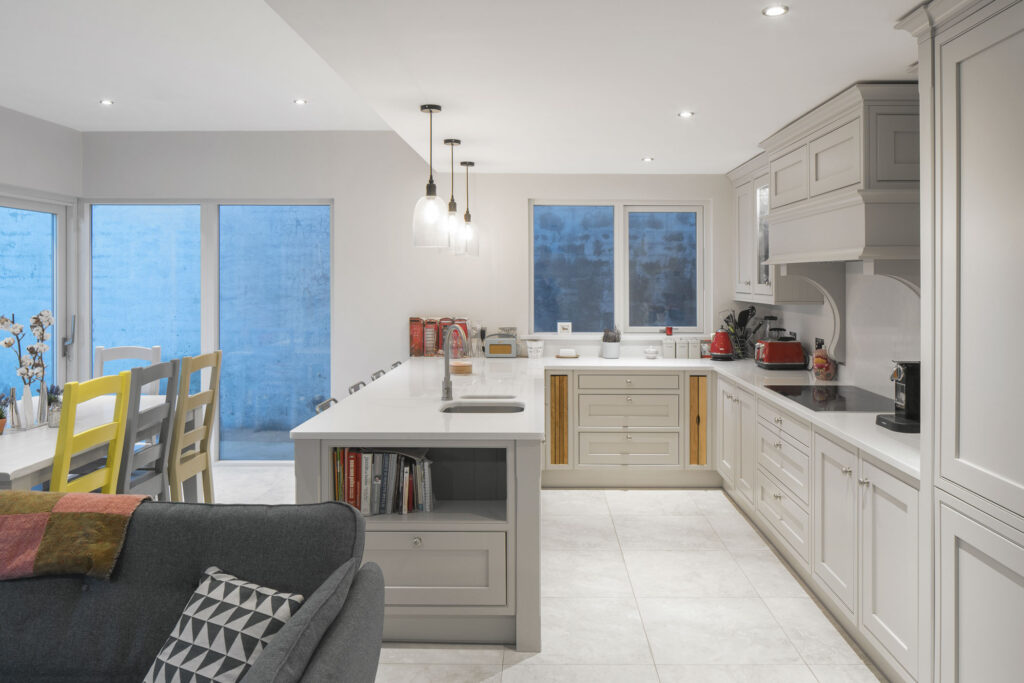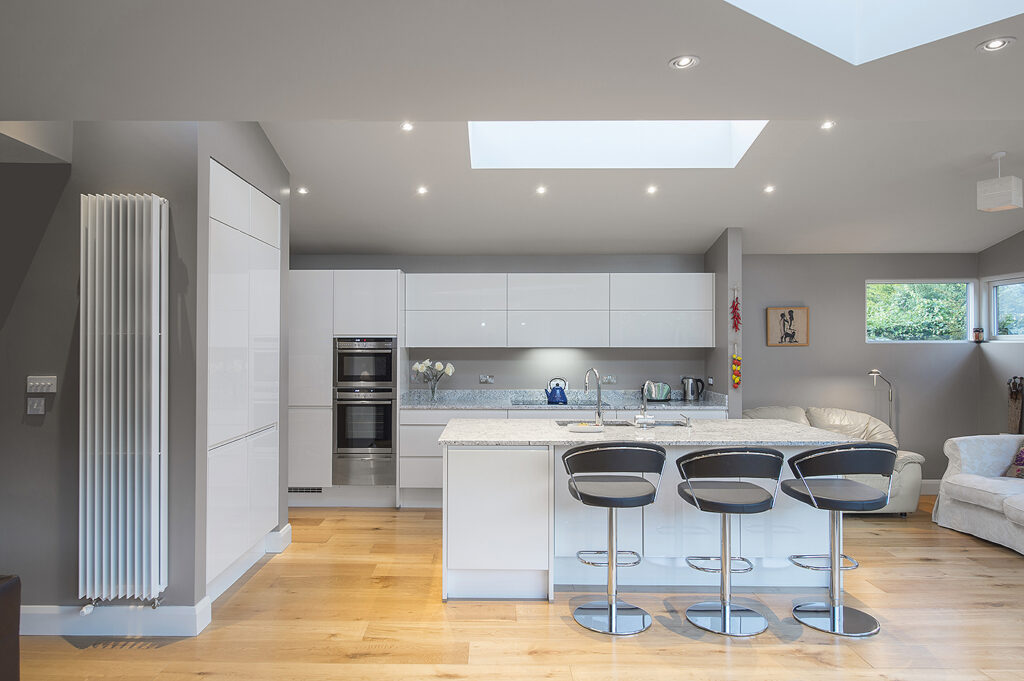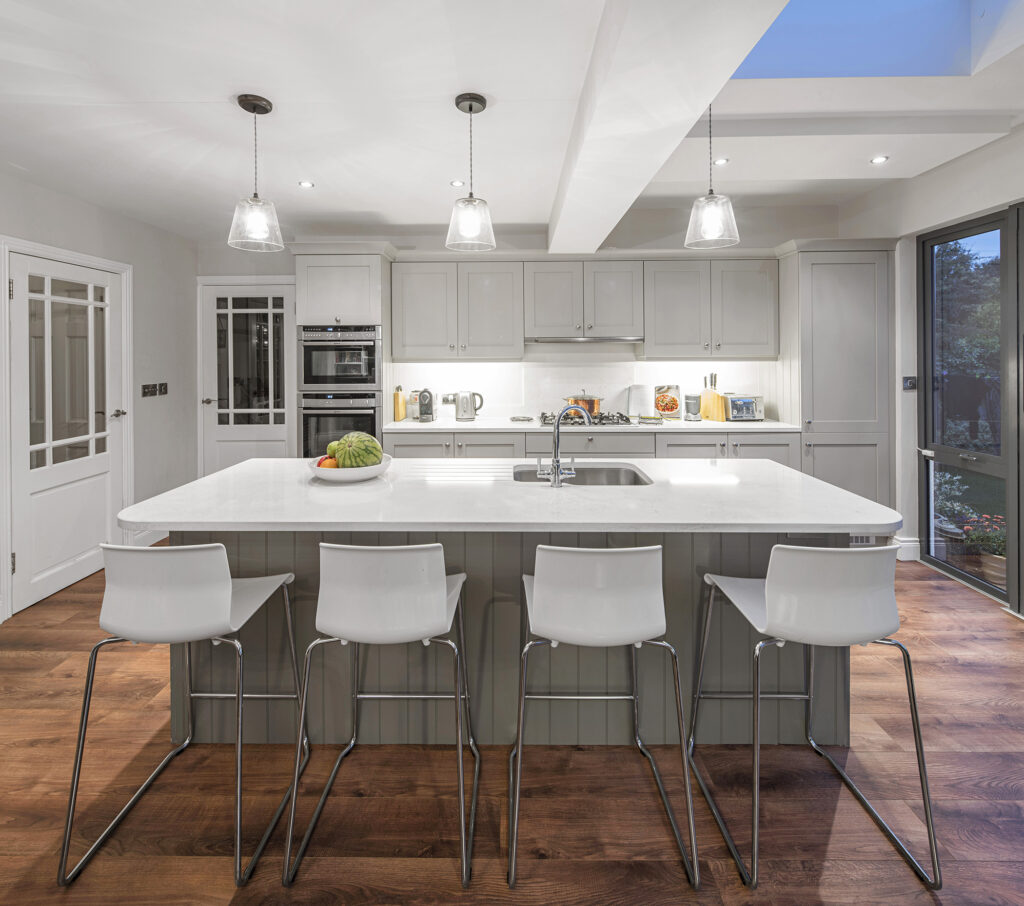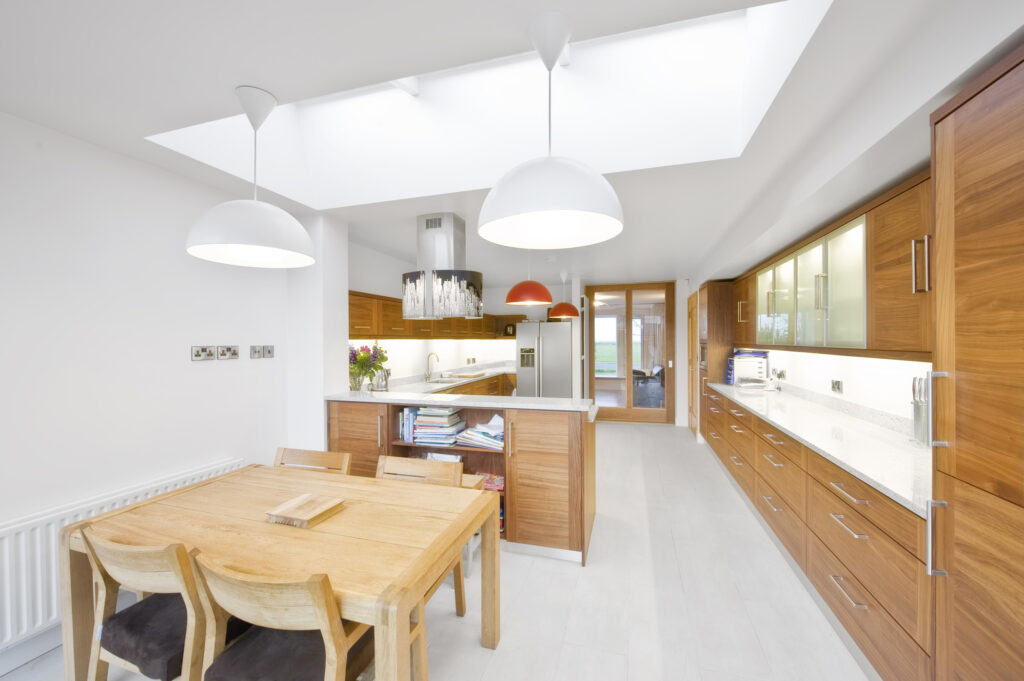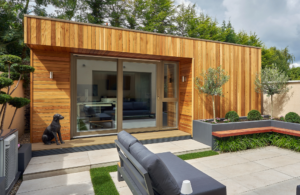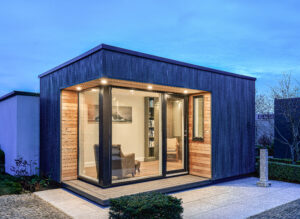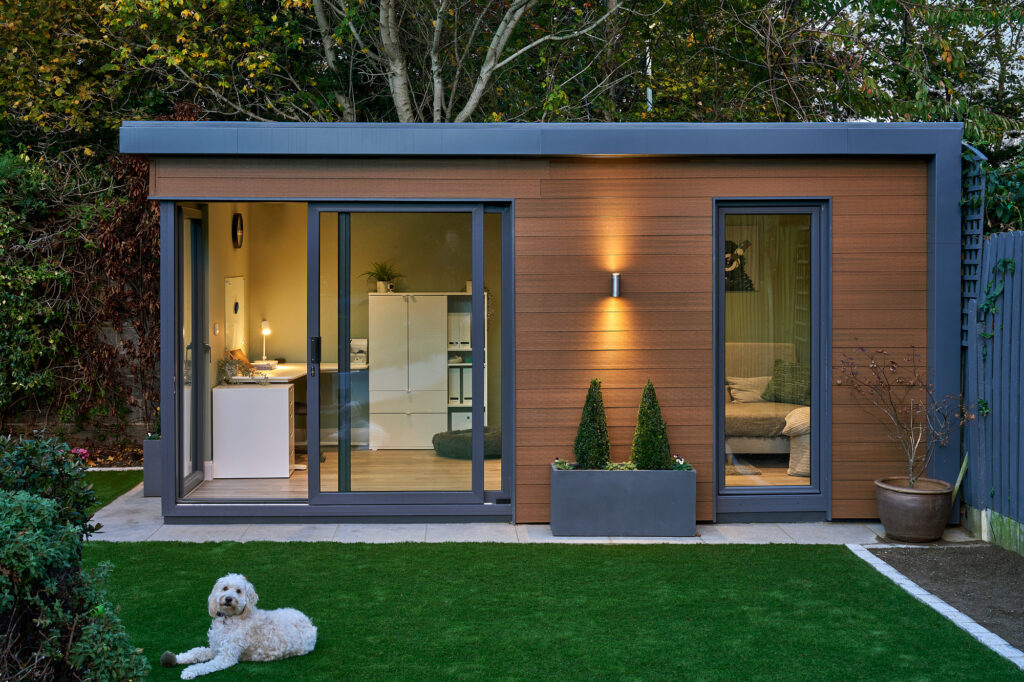Before we get started, let’s define the difference between a kitchen peninsula and an island. A peninsula is attached to a wall in your kitchen, while an island is freestanding. Also, in the majority of cases, a peninsula will be connected to other kitchen units at a right angle.
In good kitchen design, the decision to have a peninsula or island will often emerge from your requirements and the geometry of the room in which the kitchen is being fitted, and one is not clearly better than the other. In fact, kitchen peninsulas and kitchen islands share many of the same benefits. They offer a great workspace as well as a space for socializing. They allow the user to face the room or the view and they offer oodles of additional storage cabinetry.
One of the downsides of peninsulas is the corner – the connection between the peninsula and kitchen units on the wall. This can create a tight space for the movement of people and let’s face it, despite much creativity around corner storage systems, they are still a compromise. A solution to the storage challenge is to put a door on the far side of the peninsula and have direct access to the corner.
Islands need more space, but on the flip side, they can be longer and larger without looking out of place. This is because they can run parallel to the main part of the kitchen, i.e., units that are against the wall.
Islands and peninsulas (in particular) are also great as dividers of space, which is very important in open-plan living.
Whatever you choose, an island or a peninsula, they have become an essential element in modern kitchen design and with good reason. Gone are the days when people were forced to work in the kitchen and face the not-very-interesting wall while others were laughing and joking somewhere else.
